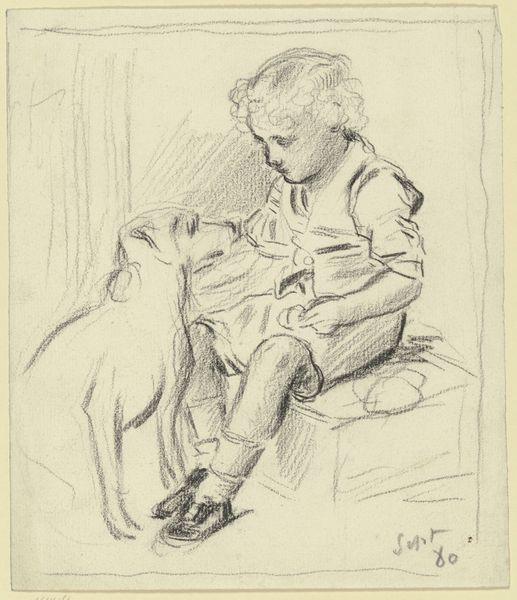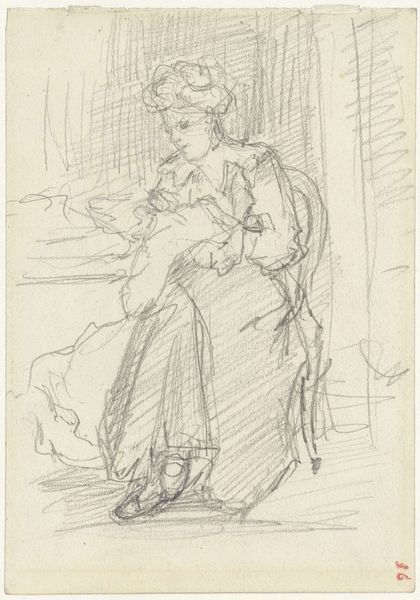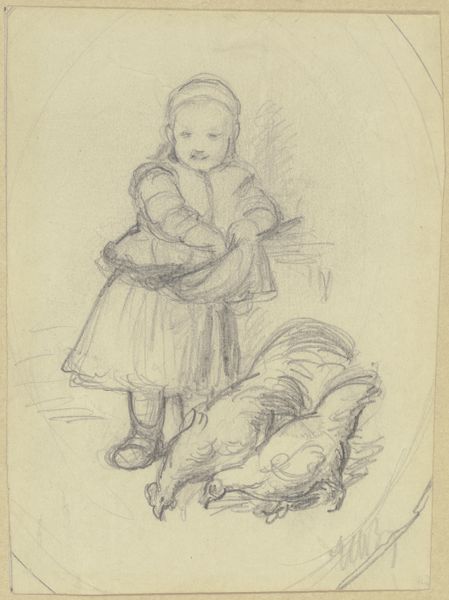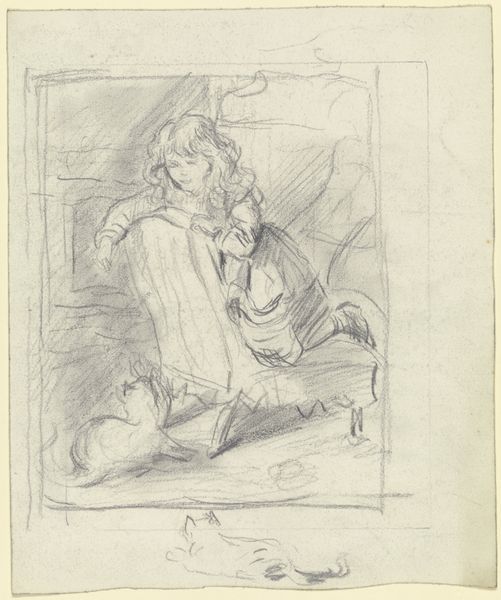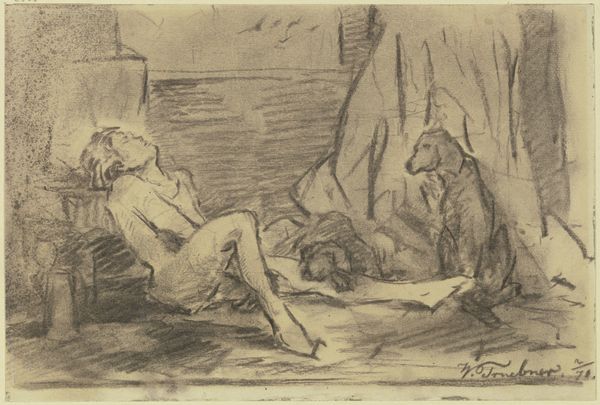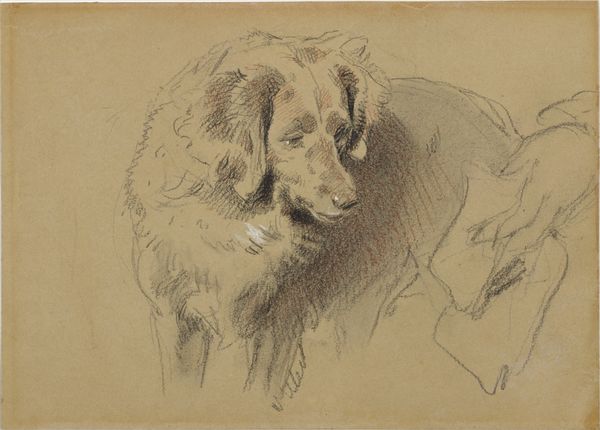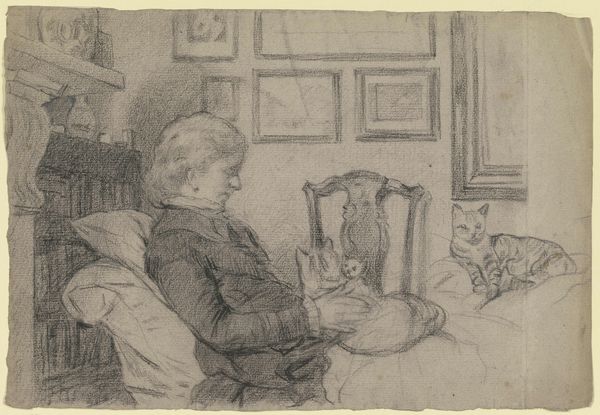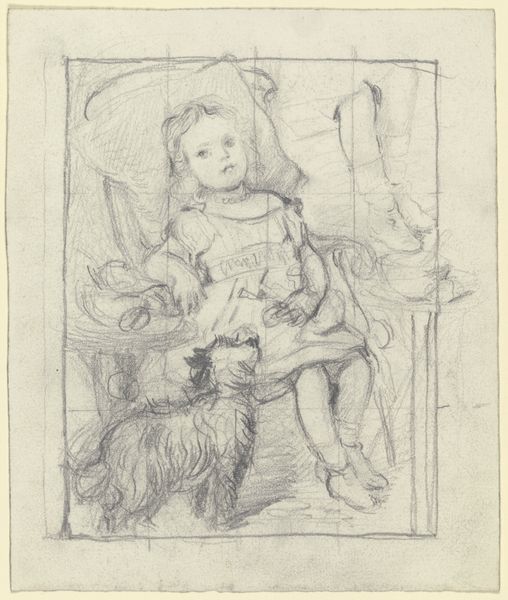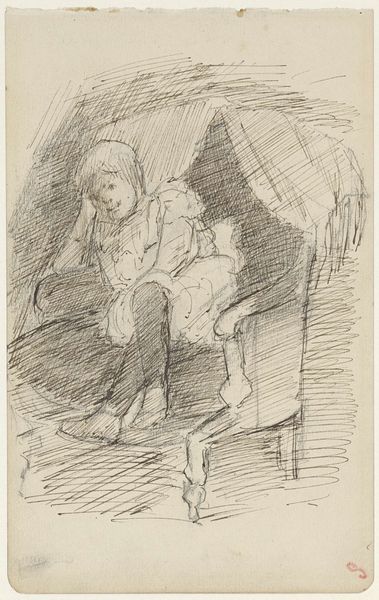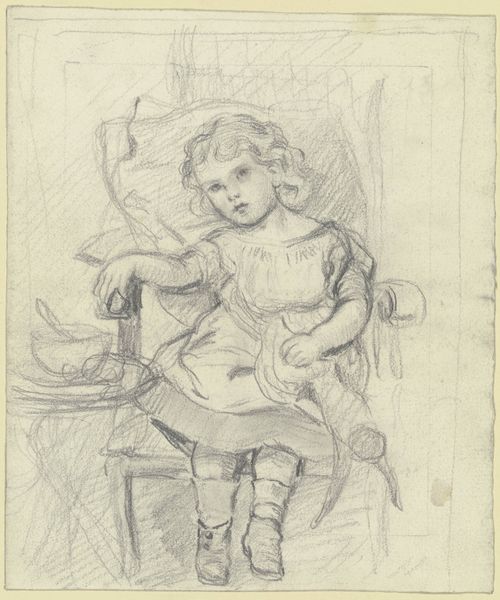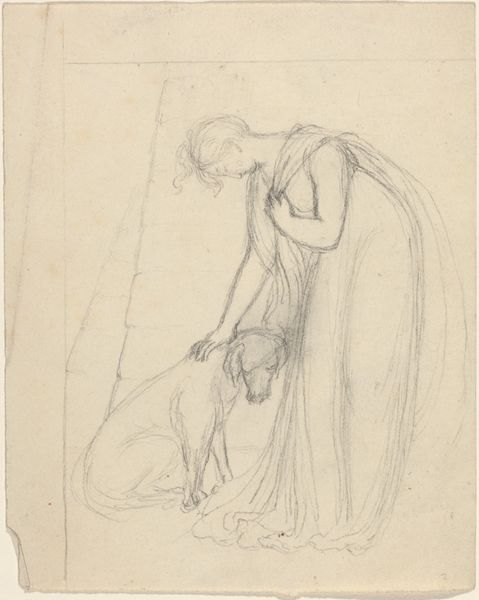
Copyright: Public Domain
Curator: What a charming study of companionship! Otto Scholderer's "Sitzender Knabe mit sitzendem Hund", or "Seated Boy with Seated Dog," was rendered in chalk and pencil around 1880. Editor: It has a casual, almost fleeting quality to it, despite the implied stillness. There’s a palpable intimacy between the boy and the dog, caught in a moment of quiet communion. Curator: Indeed. The motif of childhood innocence paired with the loyalty of a dog has a long and potent symbolic history. We see the dog not only as a domestic pet, but often as a guardian spirit, a representation of unconditional love and fidelity. This interplay highlights the cultural values associated with the home and family life during that period. Editor: And it resonates still! Look how carefully the artist captured the soft curls of the boy's hair and the trusting gaze of the dog. There is another sketchy dog in the upper right background, too, implying a life with animals or further artistic work of the dog. It conveys so much emotion, and, in general, I appreciate how sketch-like the entire work looks. It’s rough around the edges. Was this intended as a finished work, or as preparation for another painting? Curator: Good eye. While Scholderer did produce many formal paintings, he used works on paper, especially portrait sketches, to explore emotional dynamics without the constraints of commissioned work. "Sitzender Knabe..." allows us to witness the artist’s immediate response to his subject. It emphasizes a middle-class ideal of domestic contentment and stability, where pets held considerable symbolic, not merely functional, value. Editor: Looking at this piece through a more critical lens, it speaks volumes about the relationship between humans and animals at the end of the 19th century. A relationship now tinted, to a degree, by human ideas of mastery and subjugation of animal. The sentimentality could even seem a bit manufactured… Curator: I can see how that reading opens avenues to a complex ethical debate about human treatment of animals. Perhaps that potential contrast – between sincere affection and social structures – allows for continuing contemporary interest in pieces such as this one. Editor: Definitely! And isn't that what great art does? Allows us to peer through different temporal and societal prisms to consider all these layers... It's certainly more thought-provoking than its quaint subject initially lets on!
Comments
No comments
Be the first to comment and join the conversation on the ultimate creative platform.
